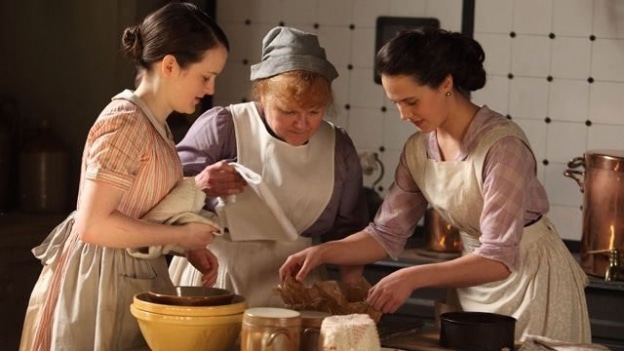Cooks of the world unite!
Exploring dishes from other parts of the world can be an exciting adventure…until you start reading the recipe and have trouble understanding the measurements. Cookipedia to the rescue. You will find this chart helpful in converting measurements from one part of the world to the other.
If I neglect to list all conversions in the recipes, just come back to this post and you should be able to find the information you are looking for in your part of the world. I will post another chart to help understand ingredients.
Oven Temperatures
- Celsius (International) — previously Centigrade
- Fahrenheit degrees Fahrenheit (in Canada, USA)
- Gas mark (UK).
This table provides a rough guide to conversion between the ranges.
| Centigrade | Farenheit | Gas Mark | Descriptive | = | Fan Oven equiv. °C |
| 110° | 225° | ¼ | Very slow/Very low | = | 90° |
| 120° | 250° | ½ | Very slow/Very low | = | 100° |
| 140° | 275° | 1 | Slow/Low | = | 120° |
| 150° | 300° | 2 | Slow/Low | = | 130° |
| 160° | 325° | 3 | Moderately slow/Warm | = | 140° |
| 180° | 350° | 4 | Moderate/Medium | = | 160° |
| 190° | 375° | 5 | Moderate/Moderately hot | = | 170° |
| 200° | 400° | 6 | Moderately hot | = | 180° |
| 220° | 425° | 7 | Hot | = | 200° |
| 230° | 450° | 8 | Hot/Very hot | = | 210° |
| 250° | 475° | 9 | Very hot | = | 230° |
| 260° | 500° | 10 | Extremely hot | = | 240° |
Weights
| Imperial | Metric | Imperial | Metric | |
| ¼ oz | 5 g | 7½ | 210 g | |
| ½ oz | 10 g | 8 oz | 225 g | |
| ¾ oz | 20 g | 8½ oz | 235 g | |
| 1 oz | 25 g | 9 oz | 250 g | |
| 1 ½ oz | 40 g | 9½ oz | 260 g | |
| 2 oz | 50 g | 10 oz | 275 g | |
| 2½ | 60 g | 10½ oz | 285 g | |
| 3 oz | 75g | 11 oz | 310 g | |
| 3½ oz | 85 g | 12 oz | 350 g | |
| 4 oz | 110 g | 1 lb | 450 g | |
| 4½ oz | 125 g | 1 lb 2 oz | 500 g | |
| 5 oz | 150 g | 2 lb | 900 g | |
| 5½ oz | 160 g | 2½ lb | 1.1 kg | |
| 6 oz | 175 g | 3 lb | 1.3 kg | |
| 6½ oz | 185 g | 3½ lb | 1.6 kg | |
| 7 oz | 200 g | 4 lb | 2 kg |
Volume
| Cups | Imperial • fl oz | Imperial • pint | Metric |
| 1 fl oz | 28 ml | ||
| 4 fl oz | 112 ml | ||
| ½ cup | 5 fl oz | ¼ pint | 142 ml |
| 1 cup | 8.45 fl oz | 0.43 pint | 250 ml |
| 10 fl oz | ½ pint | 284 ml | |
| 10.10 fl oz | 0.52 pint | 300 ml | |
| 15 fl oz | ¾ pint | 426 ml | |
| 2 cups | 16 fl oz | 0.83 pint | 473 ml |
| 20 fl oz | 1 pint | 568 ml | |
| 35 fl oz | 1 litre | ||
| 4 cups | 32 fl oz | 1.7 pints | 946 ml |
| 40 fl oz | 2 pints | 1.13 litres | |
| 70 fl oz | 3.5 pints | 2 litres |
Note on cup measurements.
In ‘modern’ recipes, use of the cup measure appears mainly in American recipes. Even here in the UK, there are 2 standards. The Commonwealth or Imperial cup measurement is 1/2 pint though in practice it is only commonly used in historic/old recipes. If your recipe uses cups as the ‘base’ measurement for all ingredients, then you should be OK. If you are uncertain, err on the side of caution (play it safe). In general, it is easy to add a little more of an ingredient – it is much harder (impossible??) to take it away again after adding it. Wikipedia article on cup measures
Lengths
| Imperial | Metric |
| 1/8” | 2.5 mm |
| ¼” | 5 mm |
| ½” | 1 cm |
| ¾” | 2 cm |
| 1” | 2.5cm |
| 1¼” | 3 cm |
| 1½” | 4 cm |
| 1¾” | 4.5 cm |
| 2” | 5cm |
| 2½” | 6 cm |
| 3” | 7.5 cm |
| 3½” | 9 cm |
| 4½” | 10 cm |
| 5” | 13 cm |
| 6” | 15 cm |
| 7” | 18 cm |
| 8” | 20 cm |
| 9” | 23 cm |
| 10” | 25 cm |
| 11” | 28 cm |
| 12” | 30 cm |
Spoon measures
| Single | Multiple |
| 1 level teaspoon | 5 ml |
| 1 level dessert spoon | 10 ml |
| 1 level tablespoon | 15 ml |
| 1 dessert spoon | 2 teaspoons |
| 1 tablespoon | 3 teaspoons |


